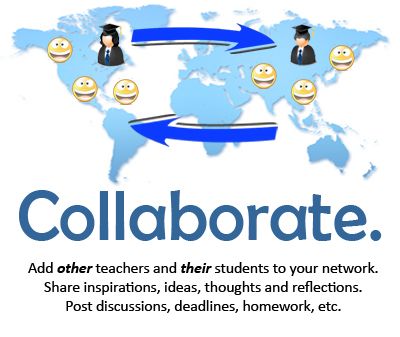Teacher Collaboration Helps Raise Student Achievement शिक्षक सहयोग से बढ़ता है छात्रों का संप्राप्ति स्तर
शिक्षण : Teaching is simultaneously one of the hardest and one of the most
rewarding jobs in the world. We often say that students make it worth
it, but there’s something else that can make or break your happiness as a
teacher: your colleagues.
“When teachers work together with their colleagues to look at student learning data, use it to determine student learning needs, and then determine their own learning needs based on what students need, they design programs that really help improve instruction. That’s social capital at its finest.”
for successful collaboration:
1. Build Relationships: Teaching is emotionally draining, and the best colleagues can be there for you in all types of situations. A student erupted in anger? Go next door at lunch time and get a hug. A student said a wildly funny thing in the middle of class? Pop your head into a colleague’s classroom and let your laughter loose.
Remember to ask your colleagues to share their trials and triumphs with you, too. Sometimes just asking fellow teachers how their day is going opens up the doors for productive and bonding conversations.
The relationships you build with colleagues aren’t just good for your mental well being; they’re also the foundation of collaboration that can result in increased student achievement. Just like building relationships with students lays the groundwork for academic success, building relationships with colleagues lays the groundwork for effective collaboration.
2. Find Time to Collaborate: Shared planning time allows teachers to collaborate during the school day. With shared planning time, teachers are able to make strides in planning rigorous and appropriate lessons for their students.
Ideally, your school provides you time within the school day to collaborate with colleagues. If this is not possible, consider lobbying to use some of your school’s professional development time for grade level or department teams.
Consider ways that you can collaborate both in and outside school. Sneak a few minutes before or after school to check in with colleagues. Think about collaborating virtually using Google Docs, Skype, or email.
Watch these videos to see examples of collaborative teams in action:
Teaching as a Team Sport (Video Playlist)
Algebra Team: Teacher Collaboration
Leadership Teams (Success at the Core Learning Module)
3. Share Responsibility: The best teacher teams complement each other. Share the responsibility for planning by dividing tasks based on your strengths and interests. When deciding how to share responsibility, consider these questions:
Source: https://www.teachingchannel.org/blog/2014/07/18/power-of-teacher-collaboration-nea/
“When teachers work together with their colleagues to look at student learning data, use it to determine student learning needs, and then determine their own learning needs based on what students need, they design programs that really help improve instruction. That’s social capital at its finest.”
for successful collaboration:
1. Build Relationships: Teaching is emotionally draining, and the best colleagues can be there for you in all types of situations. A student erupted in anger? Go next door at lunch time and get a hug. A student said a wildly funny thing in the middle of class? Pop your head into a colleague’s classroom and let your laughter loose.
Remember to ask your colleagues to share their trials and triumphs with you, too. Sometimes just asking fellow teachers how their day is going opens up the doors for productive and bonding conversations.
The relationships you build with colleagues aren’t just good for your mental well being; they’re also the foundation of collaboration that can result in increased student achievement. Just like building relationships with students lays the groundwork for academic success, building relationships with colleagues lays the groundwork for effective collaboration.
2. Find Time to Collaborate: Shared planning time allows teachers to collaborate during the school day. With shared planning time, teachers are able to make strides in planning rigorous and appropriate lessons for their students.
Ideally, your school provides you time within the school day to collaborate with colleagues. If this is not possible, consider lobbying to use some of your school’s professional development time for grade level or department teams.
Consider ways that you can collaborate both in and outside school. Sneak a few minutes before or after school to check in with colleagues. Think about collaborating virtually using Google Docs, Skype, or email.
Watch these videos to see examples of collaborative teams in action:
Teaching as a Team Sport (Video Playlist)
Algebra Team: Teacher Collaboration
Leadership Teams (Success at the Core Learning Module)
3. Share Responsibility: The best teacher teams complement each other. Share the responsibility for planning by dividing tasks based on your strengths and interests. When deciding how to share responsibility, consider these questions:
- What do I enjoy planning? What does my colleague enjoy planning?
- How much time do we have?
- What makes sense to plan together? What could we plan separately?
- How can we share our plans and get feedback from each other?
Source: https://www.teachingchannel.org/blog/2014/07/18/power-of-teacher-collaboration-nea/









Comments
Post a Comment